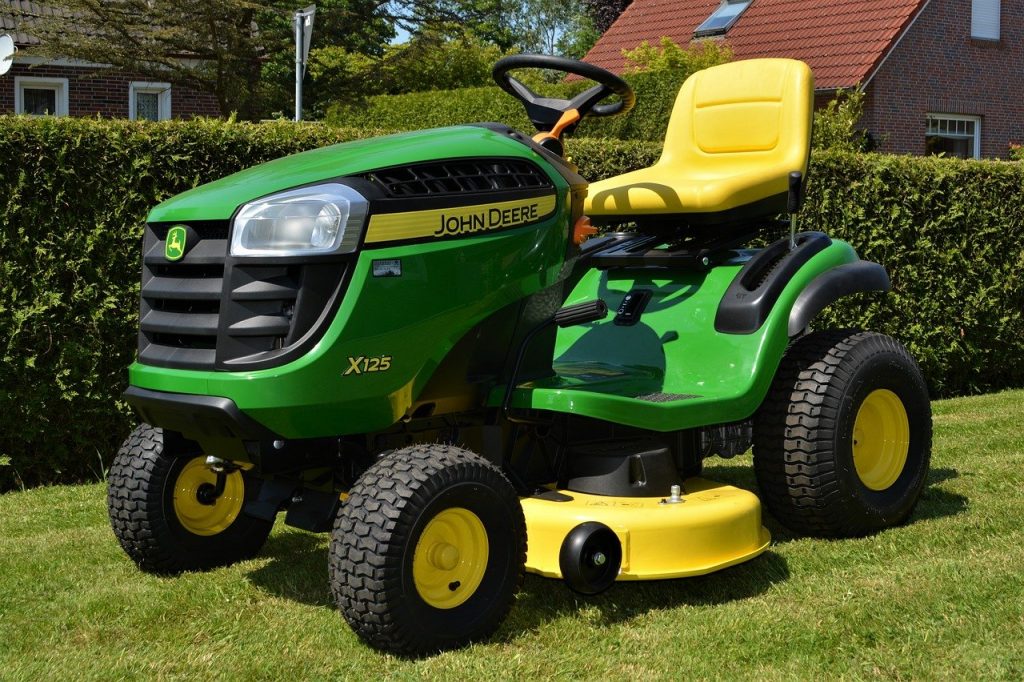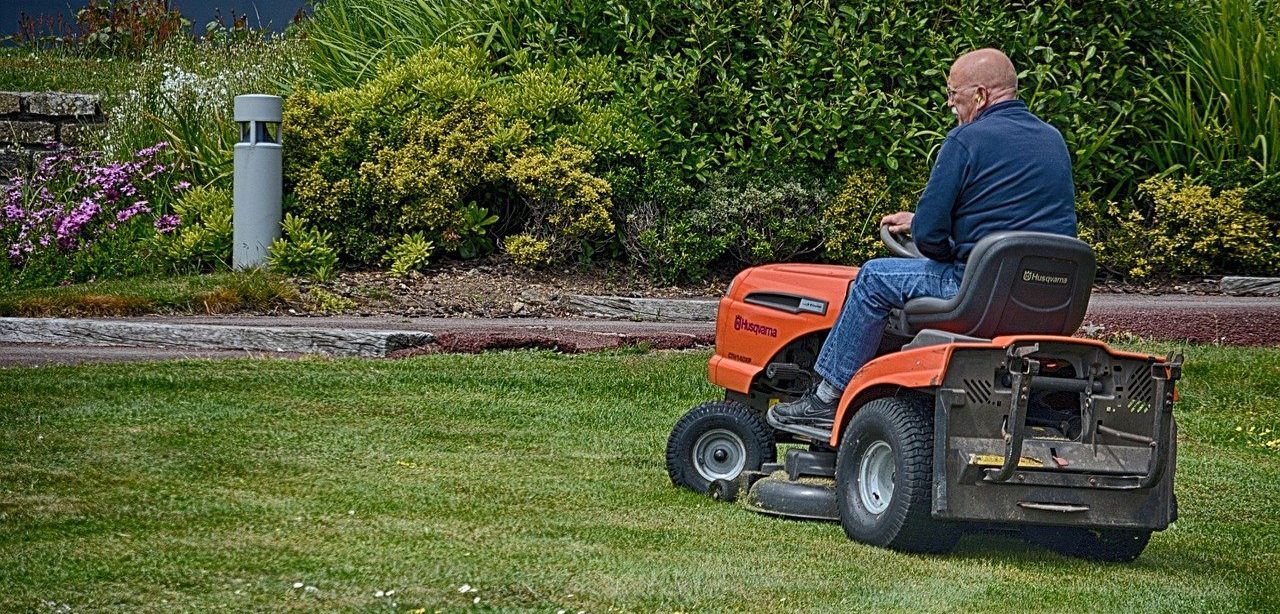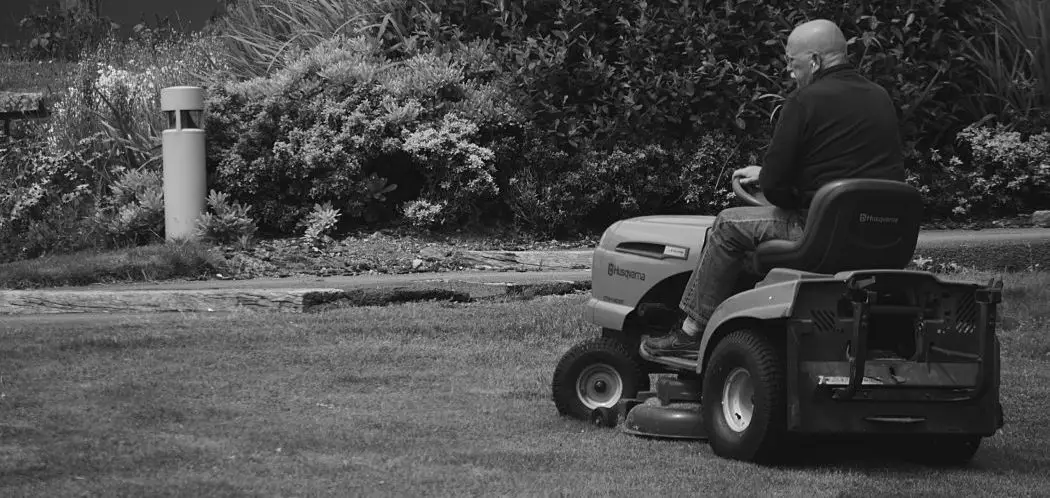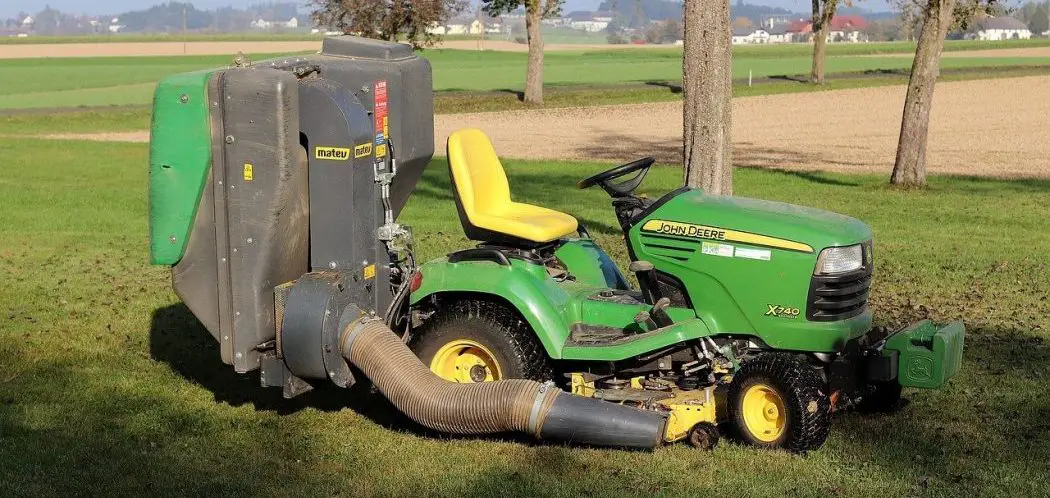If you use a riding lawn mower to cut your grass, you might occasionally notice that your grass is being scalped. Scalping means that you are cutting the grass way too short. Scalping may occur in patches which can produce a very uneven look across your lawn. While scalping an entire lawn is sometimes a useful thing to do, accidental scalping that leaves behind only brownish-yellow stubs is unsightly and certainly not what you are looking for.
There are a number of ways that accidental scalping can occur. In short…
Scalping the lawn is usually caused by uneven ground, improper air pressure in the tires, a deck that needs to be adjusted, blades that are in bad condition or the need for gauge wheels.
The thing is, if you know what causes this scalping, you can do something about it.
Let’s take a look a these causes in a little more detail…
1. The Ground Is Uneven
If your lawn isn’t level, the deck of your lawn mower might hit all the way down to the ground in certain spots. You could choose to fill in the low spots or try and flatten the lawn with a lawn roller. These are heavy devices that you roll across the lawn in attempt to flatten out the terrain. They are good for people who have small lumps in their yard. A lawn roller may be useful to level things out which may allow you to get a more even cut.
If you’re going to use a roller, you’ve got several different types you can choose from.
Here are a few tips too…
- The ground should be damp but not soaking wet.
- Spring is the best season to use your lawn roller
- If your soil has a lot of clay in it, you should skip lawn rolling altogether.
- It is not necessary to roll your lawn every year.
If you are scalping when you mow, it may just be that you are trying to mow too short. While it can be tempting to cut more of the grass to avoid mowing as frequently, mowing a little bit higher is the better option if you’re looking for a healthier lawn with a better appearance. Slapping is much more likely to occur if you’re trying to cut too close to the ground.
2. The Tire Pressure Is Off
This seems like an overly simple reason for scalping your lawn, but at least you know it’s easy one to fix.
One of the first things you should do when if scalping occurs is check the air pressure in your tires. The tires on your lawn mower need to have sufficient air in them to avoid compromising the stability of the mower.
Uneven tires can negatively affect affect the way they roll over the lawn while you are mowing and can cause scalping to occur.
It’s pretty easy to spot a flat tire on a lawn mower but while you’re at it, you’ll want to occasionally check the tires with a gauge that measures the pressure. You won’t be able to notice 5-10 psi change from tire to tire even though that difference could affect the lateral stability of the mower so be sure to measure them every so often.
Gauges are inexpensive and easy to find. It doesn’t have to be anything fancy, this one works great for me!
If you need to, you can always check your user manual to learn exactly how much air your particular tires need. The required psi pressure value is usually on the side of the tire too! I’ve written an article about how to read the numbers on a lawn mower tire here.
3. The Deck Needs an Adjustment
Over time, your lawn mower deck can become warped and uneven. When it is not level, scalping is a possibility.
It’s pretty easy for the deck to get out of whack. Some of the common causes for this are:
- The threaded brackets that adjust the deck are incorrectly adjusted
- The mower deck has become bent which is often can be caused by frequently stepping on the deck. I’ve found a step is useful to prevent this from occurring.
- The additional weight of a boot on one side of a mower can throw the deck out of balance.
If you adjust with the adjustment bars, it is likely the problem will be solved. Sometimes it will require a little bit of trial and error to get things in line. It’s definitely worth consulting your user manual to learn exactly how to do this since each mower is slightly different.
When you level the deck, make sure you level both side to side. This way all of the blades will be cutting at the exact same height.
For most riding mowers, you actually want the front of your deck to be a fraction of an inch lower than the back of your mower deck – It’s just the way they’re designed to work most efficiently. You never want the back of the deck to be lower than the front.
The deck also needs to be checked periodically for any wear and tear, as well as any weakness in the metal or even a slight bit of deterioration. Your lawn mower deck has to be in good shape and with no known deformities or flaws of any kind.
4. The Condition of the Blades Is Substandard
Oftentimes, the lawn mower blades are to blame for your scalping of the lawn. Check your blades for anything out of the ordinary such as blades that are bent or damaged, installed incorrectly, not sharp enough, worn out and dysfunctional, dirty or anything else that could be wrong with them.
Many of these things can affect the evenness of your cut just as much as a rock or stone would if it gets in your way. Your blades need to be well maintained if you want to get the results you’re looking for.

Blades can also be a problem when they’re set too low. As a general rule, you should mow no more than one-third of the grass each time you mow. If you cut more than that, you’re taking too much of the grass away, which means that it won’t take long for the grass to be cut too low, i.e., scalped.
5. You Need Gauge Wheels Installed
Gauge wheels installed on the front, back and side of the deck so that the mower deck moves up and down over your lawn to adjust to the terrain. Installing these wheels can be extremely helpful when dealing with any terrain that’s irregular and uneven. They are specifically designed to prevent scalping from occurring.

If you’re mowing and you decide to adjust the normal cutting height, you should consider adjusting the gauge wheels at the same time. Ideally, you’re looking to to have a 3/8 inch gap between the bottom of the wheel and the ground.
Even better, gauge wheels are easy to install even if you aren’t mechanically inclined. You’ll get an instruction manual that comes with the wheels that will tell you exactly how to put them on. It’s important to note that there are several types of gauge wheels and the application may differ slightly across different mowers but its usually done by moving a caster stem up and down.






